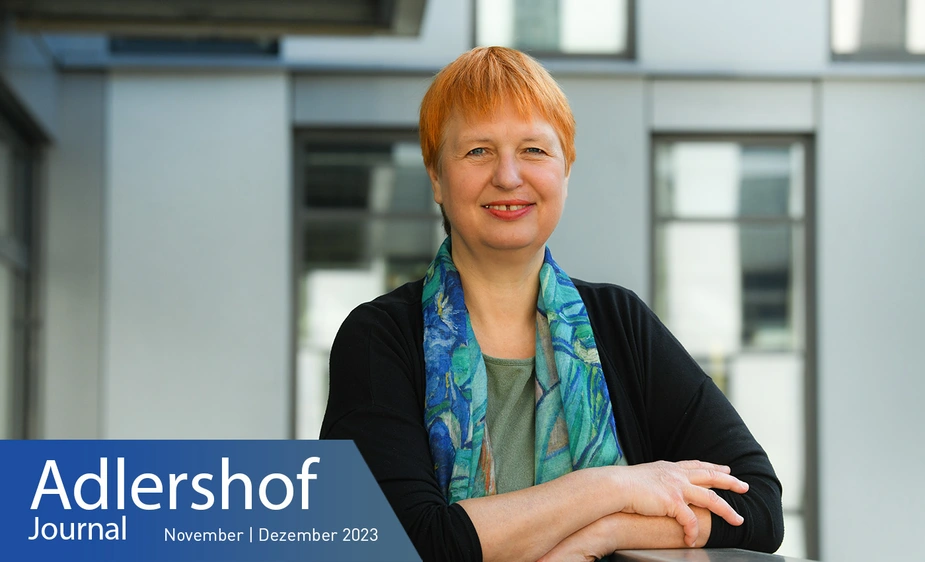In conversation with Dr Kathrin Buchholz
The environmental engineer is head of public relations at the Berlin-Brandenburg State Laboratory
“Communication with a focus on science” is the metier of environmental engineer Kathrin Buchholz. She has worked for the scientific office of the Adlershof-based research network IGAFA, headed the business office of the Long Night of the Sciences for about ten years, and has now been responsible for the public relations of Landeslabor Berlin-Brandenburg (LLBB), the state laboratory, since September 2020.
Adlershof Journal: What are your tasks at Landeslabor Berlin-Brandenburg?
Kathrin Buchholz: As the public relations officer, I am responsible for internal and external communications. This ranges from the design and maintenance of our intranet, through to the annual report, visitor programmes, and events, to press relations. An important project in the near future will be relaunching our online presence. Moreover, I coordinate the office of the Board of Directors. I value this diversity – both in terms of my own tasks and the broad range of topics covered by the state laboratory’s work.
What were the topics that attracted the most public interest so far?
Naturally, acute crises get a great deal of attention: We were the ones to diagnose the African swine fever, say, and to investigate the water of the Oder river on behalf of Brandenburg’s State Office for the Environment. Last year, for example, we had quite an increase in media enquiries concerning the mass die-off of fish. In past food crises and food safety scandals, like the occurrence of EHEC infections in 2011, some severe, or the discovery of dioxins in eggs in the same year, LLBB investigated many of the samples. From my experience, if they are presented in an understandable way, our topics typically have quite a big media impact because of their closeness to people’s everyday lives. Almost everything that people come into contact with is examined in the state laboratory.
Why is communication particularly important in the field of science?
Many areas of our lives would cease to work without science and technology. Keeping this in the public consciousness is an important task of science communication. At the same time, a broad understanding of how scientific knowledge is generated and how it can change is important. The latter has been very clearly shown by the debates during the pandemic. Additionally, getting across the logic behind and the significance of official controls and the monitoring that goes with them is part of my work. As citizens, we all want safe food, tested lakes for swimming, healthy animals, etc. However, this requires a lot of know-how, appropriate technical and human resources, and, with some analyses, a lot more time than often assumed.
Have you noticed any changes over the years?
Science scepticism movements, some of which amount to science rejectionism, can exercise a large reach through social media with little effort. At the same time, traditional media are increasingly poorly staffed and have less time for doing their research. These and other trends result in mounting requirements for good and responsible science communication.
What do you do in your free time?
A lot of music. I have been playing the clarinet since I was 11 years old, preferably in a large symphony orchestra or smaller chamber music ensembles. They, too, are about communication because very good understanding, often non-verbal, is also required to play together precisely.
Do you have a favourite place in Adlershof?
I have several. The state laboratory because I enjoy working here. The Aerodynamic Park because the wind of history blows there and because the buildings there are so special, if a bit bizarre. And I like the architecture of the Centre for Photonics and Optics – the so-called amoeba –, which I can see from my office window.
Peggy Mory for Adlershof Journal
